Welcome back to the Crisis Crash Course, your weekly look at the week that was in The CW’s Arrowverse in preparation for the upcoming Crisis on Infinite Earths crossover! Every Friday we’re looking at the past week’s episodes of Arrow, The Flash, Batwoman, and Supergirl, highlighting anything that looks Crisis-related or might otherwise be important to know for the event.
Before we get into the news of the week, did you catch the first teaser for Crisis? The one that features Lex Luthor (Jon Cryer), the Kingdom Come Superman (Brandon Routh), and possibly a first look at Ryan Choi (Osiric Chau)? If not, here it is:
That’s ten seconds of pure awesome (and five seconds of a Boost Mobile ad).
This week was a pretty light one—both The Flash and Arrow, so far our most Crisis-heavy series, were in reruns, with their respective season premieres reairing, and Supergirl and Batwoman continued their weeks-long streak of no discernable Crisis content. With that in mind, I’d like to follow up on a topic I touched on briefly last week, and take an overall look at a larger concept within the Arrowverse.
It’s time to talk about time travel.
Time Travel in the Arrowverse
When Arrow debuted in 2012, the series had a fairly small scope. Oliver Queen (Stephen Amell) protected Starling City, crossing names of those who had failed the city off of his father’s list. Sure, he’d had to dismantle earthquake machines, and squared off against armies of chemically-enhanced supersoldiers, but for the most part his adventures were street-level and more or less obeyed the laws of physics.
That all changed when The Flash debuted in 2014. Aside from introducing people with powers to what was now the Arrowverse, from the very first episode time travel was now on the table. We’ve talked previously about the newspaper from the future that’s portended Barry Allen (Grant Gustin)’s imminent disappearance in the Crisis. The main villain of the show’s first season, Eobard Thawne, aka The Reverse-Flash (Tom Cavanagh/Matt Letscher), is himself a time-traveller from the 22nd Century. Originally a fan of The Flash’s, Thawne recreated the accident that gave Barry his powers and used his own superspeed to travel back in time to meet his idol. Upon arriving, Thawne discovered that he was destined to become The Flash’s greatest enemy, which sent him over the edge and led to his becoming the Reverse-Flash.
Thawne would ultimately travel back in time to murder Barry Allen’s mother, becoming trapped in the past in the process. Forced to live in the 21st Century without his speed, Thawne killed Dr. Harrison Wells and assumed his identity, orchestrating events to speed up the particle accelerator explosion at S.T.A.R. Labs and create The Flash in the belief that he could use Barry’s speed to help him get back to his home time. Thawne’s plan would have succeeded if not for the intercession of his ancester, Detective Eddie Thawne (Rick Cosnett), who committed suicide, ending the Thawne bloodline early and erasing Eobard Thawne from existence.
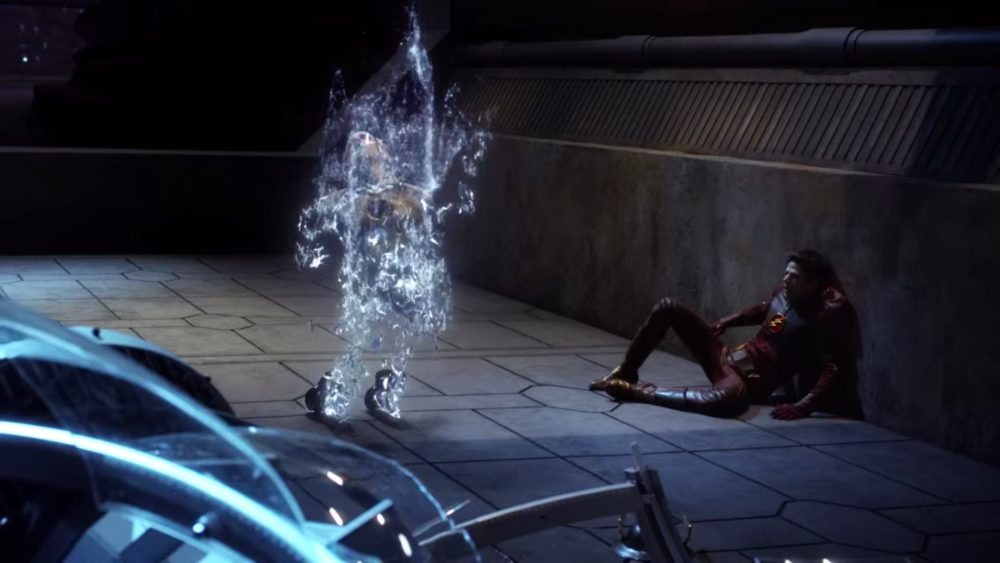
Thawne’s season one story illustrates a few things about how time travel works (or doesn’t work) in the Arrowverse. For one thing, Thawne’s origin as The Reverse-Flash represents a causal loop paradox—he would not have become The Reverse-Flash had his future self not already become The Reverse-Flash. Similarly, Thawne murdered Barry’s mother when Barry was a child, which led to Barry becoming a forensic scientist, which led to his becoming The Flash, which led to Thawne becoming the Reverse-Flash and, ultimately, murdering Barry’s mother. That’s all well and good, and presents a certain internal logic to the time travel that makes sense, at least to me.
But there are still issues with this. Thawne makes numerous changes to his own past timeline while he’s trapped in the past. He accelerates events in order to create The Flash sooner, which in turn leads to the creation of dozens of other metahumans, all presumably before their time. Yet none of these changes have any effect on Thawne. It’s only when Eddie Thawne takes his own life, which directly impacts Eobard Thawne, that the timeline is impacted and the Reverse-Flash is erased.
This pretty well encapsulates time travel as it’s been used in the Arrowverse ever since: if the manner in which an event happens changes, that’s okay; if something changes to prevent an event from ever happening, though, there will be consequences. Legends of Tomorrow, a series that utilized time travel extensively, more or less confirms this; they meddle in the past constantly, but as long as events take place as history says they should, the specifics don’t really matter.
The Kids Are Alright (But They Shouldn’t Be)
Now at this point you might be wondering why I’m talking about this. There are actually three very good reasons why I’m talking about this.
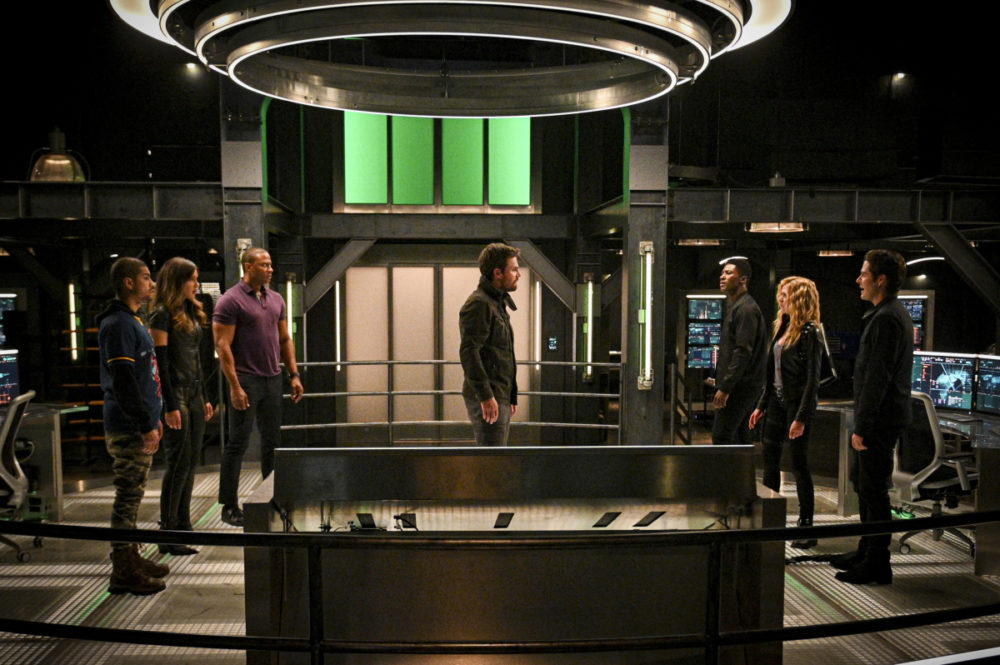
Last week, three heroes from the Star City of 2040—Oliver’s adult children, Mia Smoak (Katherine McNamara) & William Harris (Ben Lewis), and John Diggle (David Ramsey)’s future adopted son, Connor Hawke (Joseph David-Jones)—were transported back to 2019 by a mysterious force, most likely The Monitor (LaMonica Garrett). There they teamed with Oliver, Diggle, and the other heroes of 2019—Dinah Drake (Juliana Harkavy), Rene Ramirez (Rick Gonzalez), and Curtis Holt (Echo Kellum)—to stop Grant Wilson (Jamie Andrew Cutler) and the rise of the Deathstroke Gang, a group that would come to be a major force in the Star City of the future.
The list of things these three have changed since arriving in 2019 is pretty significant, and they’ve only been in town for 42 minutes. It includes:
- Connor tells John Diggle that he will adopt Connor, something that has not happened yet as the Connor of 2019 still lives with his mother
- Ben tells Rene that he becomes the mayor of Star City in the future, when Rene has only just started his first campaign for a city council seat
- The combined team captures Grant Wilson, preventing him from mobilizing the Deathstroke Gang and destroying the location the gang would have used as a headquarters in the future.
It’s the last part that’s the most troublesome for the timeline, as that has major repercussions on the Star City of 2040. The Deathstroke Gang is a major force in the future, and has been the primary antagonist for Connor, Mia, and William this season. More specifically, the removal of Grant Wilson from the equation has major impact on Diggle’s son, J.J. (played in 2040 by Charlie Barnett), who Grant had taken under his wing and trained to become the new leader of the Deathstrokes. Connor had also infiltrated the Deathstrokes at one point, as an undercover Knightswatch agent, learning about their tactics and keeping an eye on his brother. It was during a fight against the Deathstrokes—in the headquarters which has now been destroyed in 2019—that J.J. killed Rene’s daughter, Zoe (Andrea Sixtos), that Connor nearly killed J.J., and that he, William, and Mia were all sent back to 2019.
By taking the Deathstrokes off the table, Mia, William, and Connor have effectively changed the circumstances by which they came together, and by which they were brought back from the future to 2019. So why are they still here? Why haven’t they been erased from the timeline like Thawne was?
One possible explanation is that Mia, William, and Connor are now remnants of a timeline that no longer exists. A timeline remnant, as explained by the Harrison Wells of Earth-2, is a person or object from the future who travels back in time and alters the timeline in such a way that the future from which they came no longer exists. However, by virtue of being from the future, the person or object continues to exist, and will continue to do so until the new timeline catches up to their origin point.
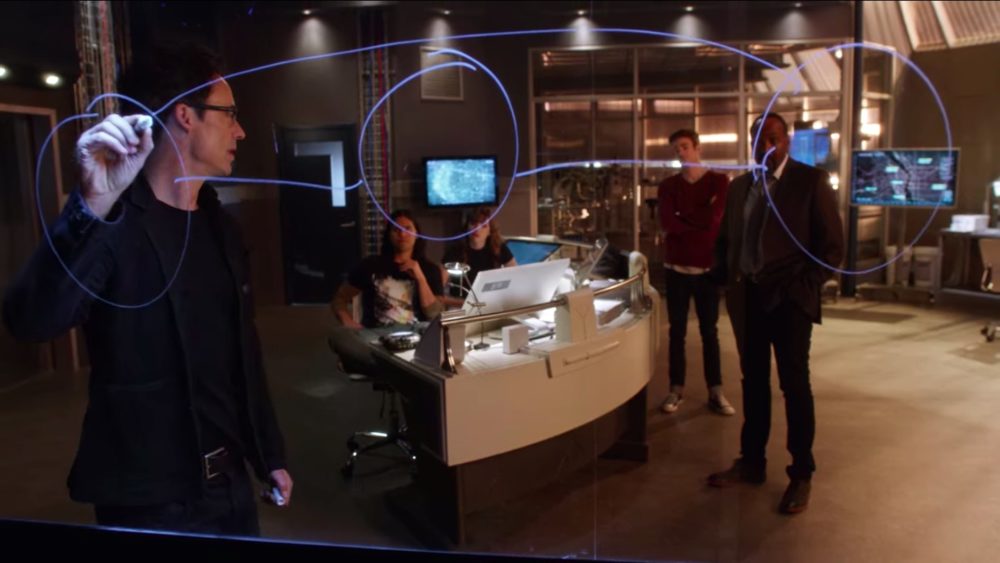
Following the events of the first season of The Flash, Eobard Thawne himself became a timeline remnant, continuing to exist in the future even though his existence had been erased from the past. The big bad of The Flash season 3 was Savitar, who turned out to be a twisted timeline remnant of Barry Allen himself, created when Barry generated multiple timeline remnants of himself in order to fight Savitar (yes, Savitar was created during the fight against Savitar, I know).
The main thing about timeline remnants, though, is that they’ve all been speedsters up until this point. As Earth-2 Wells explained it when describing the remnant of Thawne, his connection to the Speed Force is what allowed him to continue to exist despite his past having been erased. The second season of Legends of Tomorrow added a new wrinkle to that, establishing that timeline remnants are removed from the timeline by the Speed Force in the form of the Black Flash. Still, Connor, Mia, and William aren’t speedsters, and don’t have the luxury of being protected by the Speed Force. It’s conceivable that The Monitor, who likely is the one responsible for their time travel to begin with, is keeping them alive.
The other possible explanation for these timeline shenanigans is Hypertime.
Welcome to The Kingdom
In 1999, DC Comics published a sequel to their alt-future smash, Kingdom Come, entitled The Kingdom. The fifth-week event, consisting of seven issues all written by writer Mark Waid and drawn by a cadre of artists, saw the Kingdom Come versions of Superman, Wonder Woman, and Batman travel back in time to meet their younger selves and to rescue the child of Superman and Wonder Woman from Gog, a superpowered being who hated Superman and had been travelling back through time one day at a time killing the Man of Steel every day.
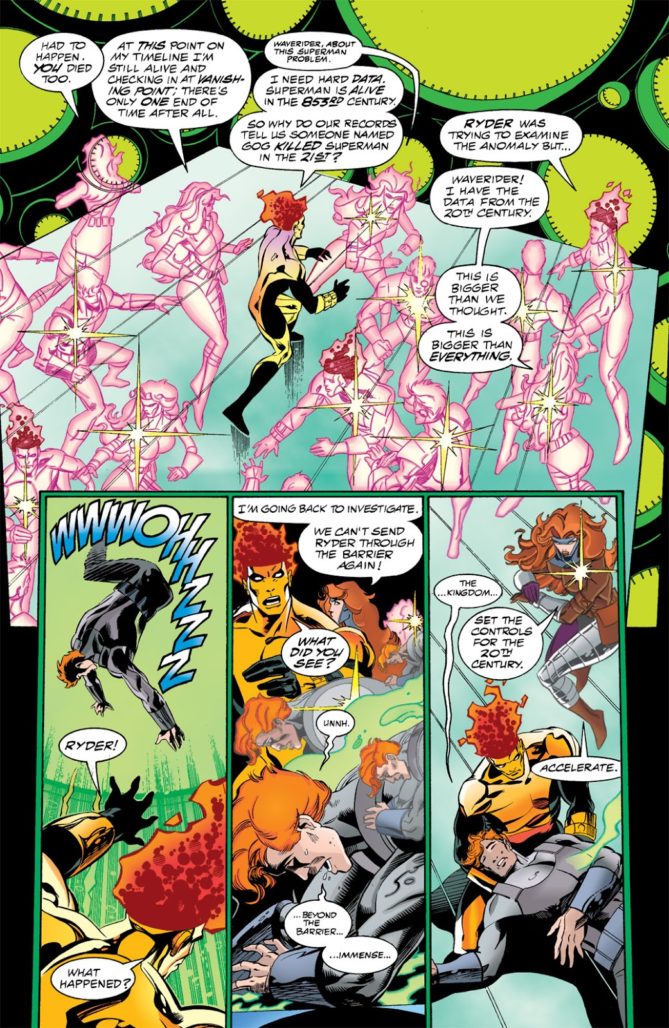
Gog’s activities were a major problem for the timeline, and they were first addressed by Waverider and the Linear Men, guardians of time itself, in a two-page interlude during the DC One Million event by Grant Morrison and Val Semeiks:
At the climax of The Kingdom, Gog, given powers by a group of omnipotent beings known as the Quintessence, accidentally breached the walls of reality with his staff, allowing the future and past versions of DC’s Trinity to view the flow of alternate realities, something which Linear Man Rip Hunter explained them as being called Hypertime.
Similar to the pre-Crisis multiverse, Hypertime comprised all timelines, all realities, with the main DC Universe being the primary timeline from which all other timelines branched off. Timelines could rejoin the DC Universe, permanently or temporarily, like tributaries leaving and rejoining a river. Essentially Hypertime was a way to explain away continuity inconsistencies within the DCU, and to bring all of DC’s stories—be they Elseworlds, imaginary stories, pre-Crisis tales, what have you—under one umbrella in a way that meant they were all valid within continuity. Everything happened, and everything was going to happen. The possiblities were truly infinite.
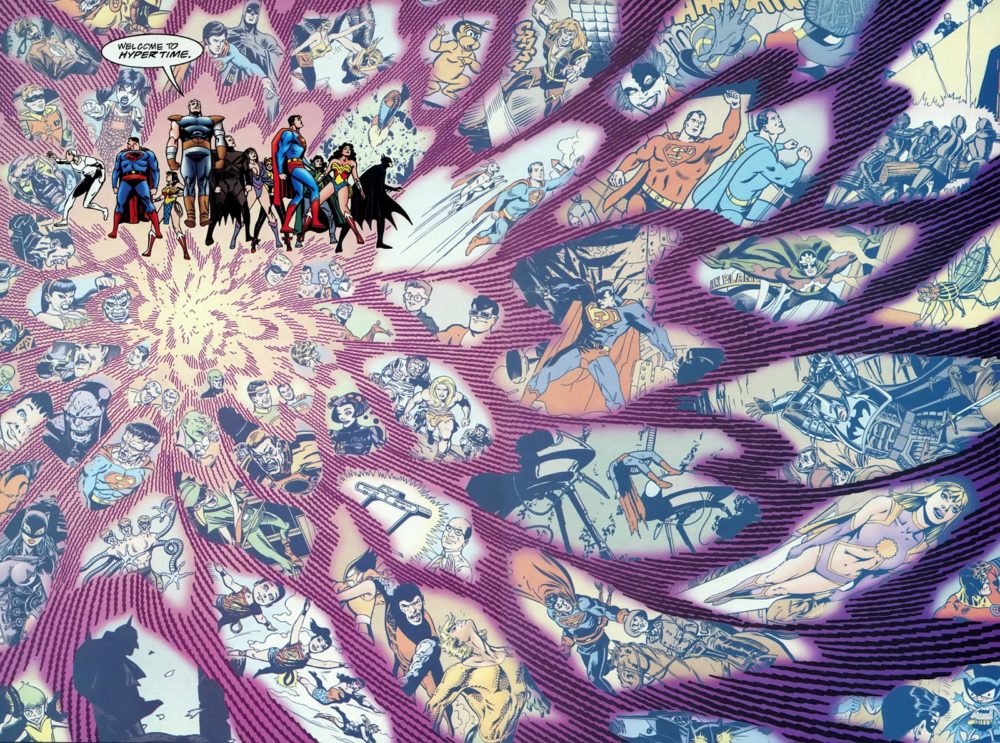
Hypertime didn’t last for very long in the DCU. It was a major part of only a handful of stories—Waid’s final stretch of issues on The Flash introduced a new speedster who was from an alternate Hypertimeline, while a Superboy storyline featured Kon-El travelling through Hypertime in an effort to stop an evil alternate Superboy—before it was largely disavowed by DC higher-ups. The Multiverse would return following 2005’s Infinite Crisis, and Hypertime was rarely spoken of again until recently, when it was reintroduced during the Dark Nights: Metal storyline. Hypertime is now playing a large role in the current “Justice/Doom War” storyline in Justice League.
Hypertime would also allow time-travelling non-speedsters within the Arrowverse to continue to exist after altering their own history. Mia, William, and Connor come from a future that still exists, but is no longer the future of the timeline in which they currently reside. They would retain all of their memories of the past for the timeline from which they come, and be able to use that knowledge to shape events in the new timeline they’ve created through their time travel. Conceivably they would also be able to return to the future of their original timeline, though that place was pretty terrible so I don’t know why they would want to.
The only potential issue with those three being from an alternate Hypertimeline is that their presence in a timeline not their own will eventually cause the two timelines to start to re-merge. We saw this in Waid’s final Flash arc, when the alternate Wally West’s timeline began to cause changes and ripples within the main DC Universe timeline. Superman momentarily became Ultraman, and Jay Garrick briefly became Jack Garrick, to name a few of the changes resulting from the merging Hypertimelines. Ultimately the alternate Wally was forced to return to his own timeline in order to avoid the two Hypertimelines collapsing in on each other. If Hypertime is a thing in the Arrowverse, though, there’s nothing saying the rules have to be exactly the same as they are in the source material.
So what is it? Are William, Mia, and Connor timeline remnants? Are they being protected by The Monitor? Have they not disappeared from the timeline yet due to Hypertime? Or are the rules of time travel in the Arrowverse all wibbly-wobbly and we shouldn’t think about them too hard or examine them too closely? I feel like it might be that last one. But it’d be pretty great if it was one of those other explanations.
That’s it for this week! Come back next week when The Flash and Arrow return from their week off, and all four series continue their march towards Crisis on Infinite Earths!


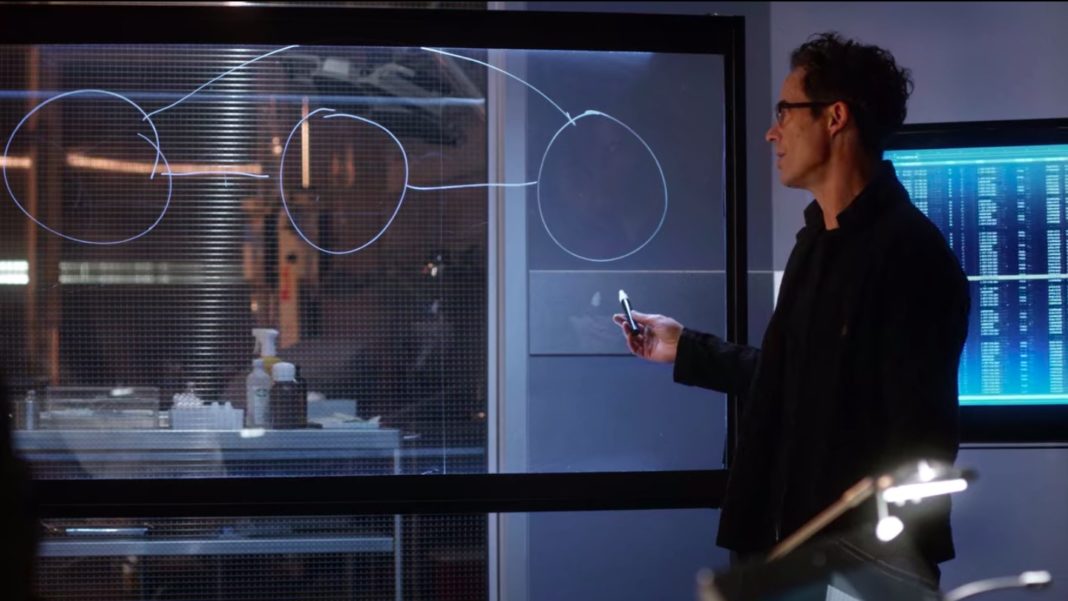





Waid being the mediocre Fanboy that he is, hypertime was his way to copy to DC Alan Moore’s 616 concept he created at Marvel for Captain Britain. Waid botched it, as he does and it was swiftly buried, until Mediocre Fanboy 2.0 Grant Morrison repurposed it in Convergence.
This notion of Time Remnants they invented for the CW show is wildly inconsistent, so it can justify anything, thus removing the stakes of having a character dying or anything really significant…
Comments are closed.